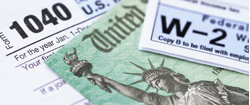Cyber criminals are always looking for the perfect opportunity to rip you off, so you need to be on guard. They can steal your information by sending fake emails, intercepting your data while you’re using public Wi-Fi, or installing malware on your phone or computer. Taking the following steps can help you protect your bank account against fraud.
Use strong and unique passwords for each of your accounts
Over 2.5 million people use “123456” as their password. Not only is it popular, but it also takes hackers less than a second to figure it out. If this is yours, change it now. It’s highly recommended that you use strong and unique passwords for each of your accounts. Using the same password across the board puts yourself at high-risk because if a hacker gets access to one account, congratulations, they now have access to all of them. To make sure your password is as strong as possible, choose one that’s at least 12 characters long and includes a mixture of upper- and lower-case letters, numbers, and symbols. It’s also recommended that you change your password every 90 days.
Enable two-factor authentication
Sometimes one layer of protection just isn’t enough. Luckily, you can beef up your account’s security by enabling two-factor authentication. Rather than entering just your username and password, you’ll also be required to enter a special code that gets sent to your phone or email. Without both pieces of information, you won’t be able to access your account.
Keep your contact information up to date
Typically, your financial institution will monitor your accounts and call or text you immediately if they spot suspicious activity. Therefore, it’s important to keep your contact information up to date. Take a minute to see what phone number and email address they have on file and update it if necessary.
Install anti-virus software
Keep your devices safe at all times by installing anti-virus software. This way, if you accidentally click a malicious link, it won’t do too much damage. Always keep your software up to date and allow it to run scans at least once a week to protect you against the latest threats. It’s also a good idea to make sure your device has the latest system updates and security patches installed.
Avoid using public Wi-Fi to access your account
It’s not uncommon for public places like your local library, restaurants, and airports to offer free Wi-Fi. While there’s no harm in using it to surf the internet, avoid using the connection to log into your bank accounts. It’s not secure. Some cyber criminals purposely create bogus links that have a similar connection name so they can steal your personal information. Either wait until you get home or consider using a VPN to connect to public Wi-Fi. This will encrypt all your data while you’re online.
Monitor your transactions
Nobody knows your spending habits like you do. Make it a point to check your bank and credit card accounts every few days to make sure there aren’t any unauthorized charges or withdrawals. If you spot a fraudulent transaction, report it to your bank or card issuer immediately. Cancel the card and have it replaced. Also consider changing your PIN just in case.




